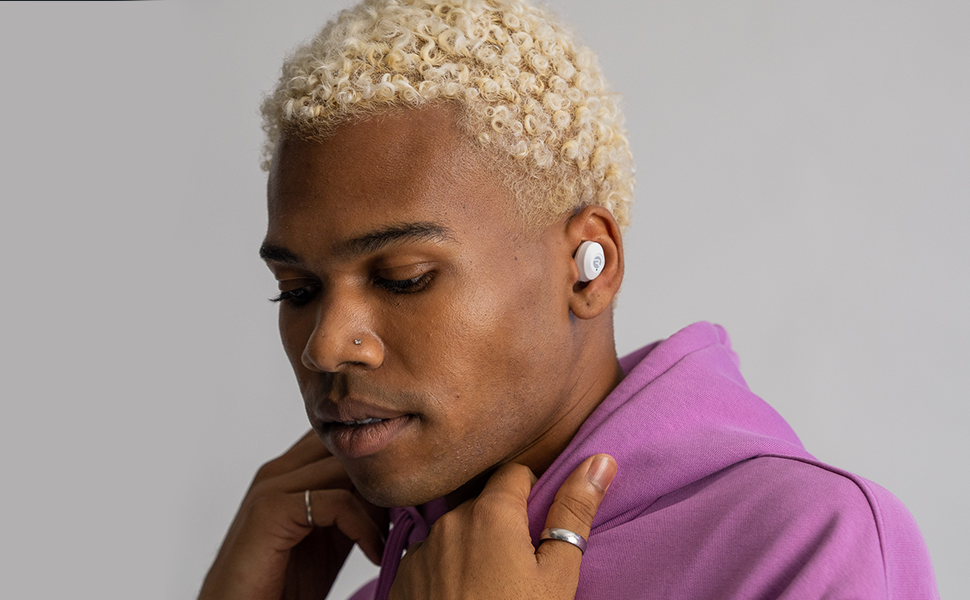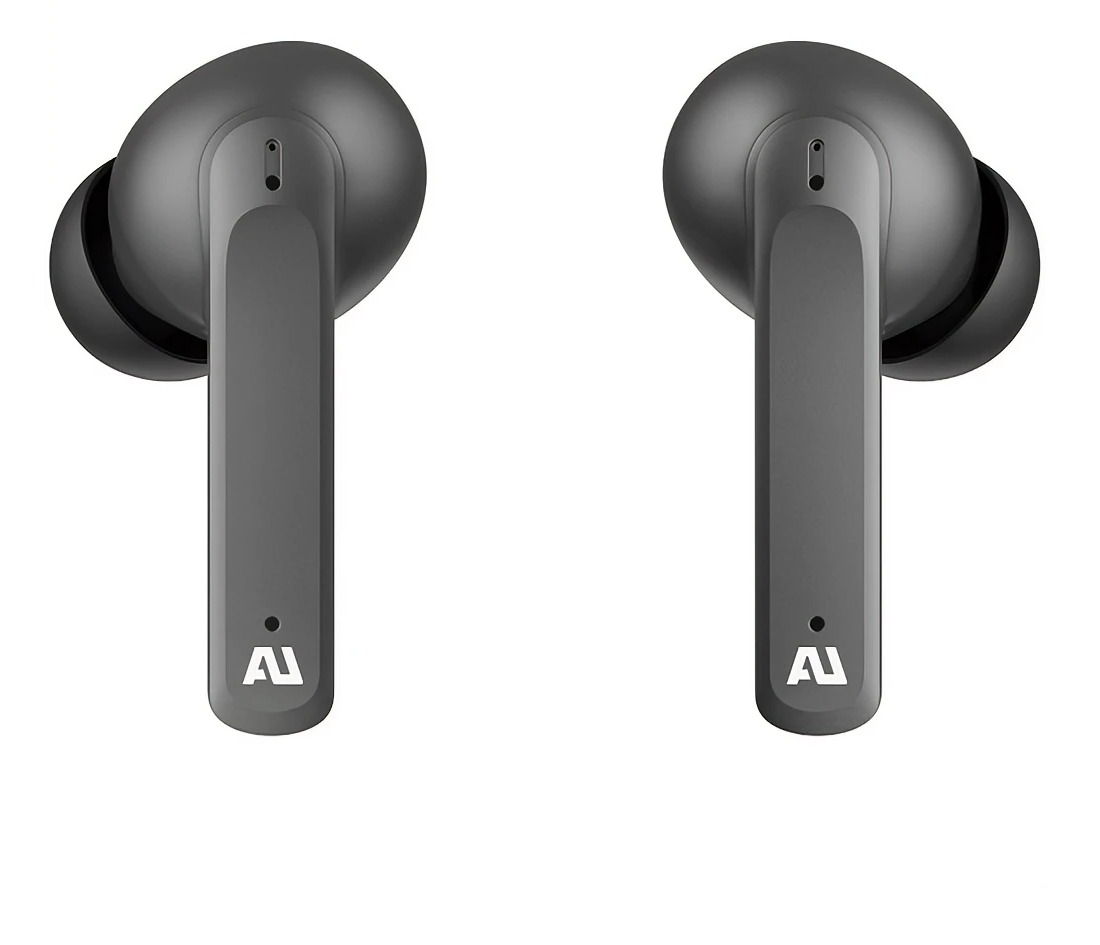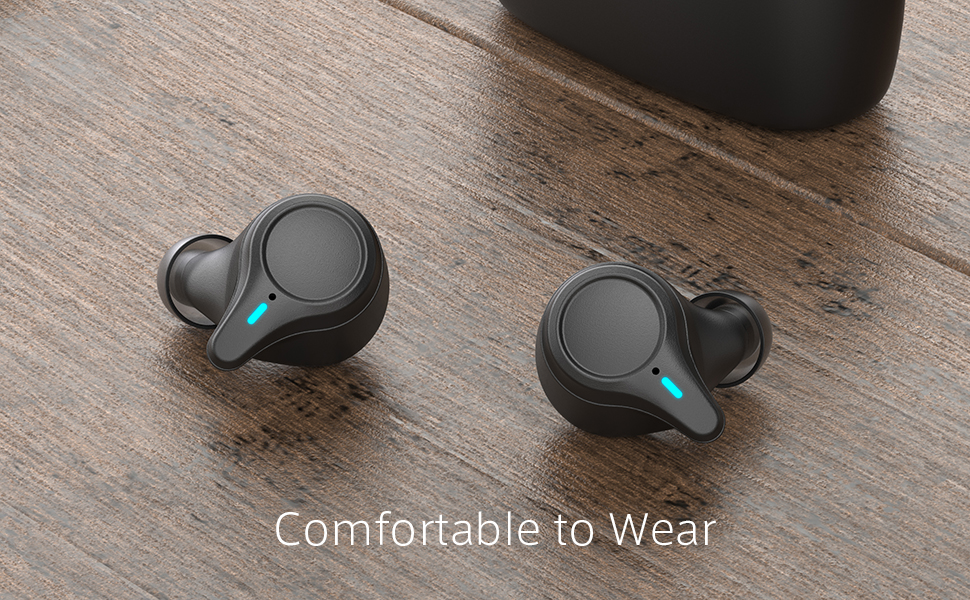Alokecek Ai Buds 3 True Wireless Earbuds – A Comprehensive
Update on June 23, 2025, 5:14 p.m.
In a world increasingly untethered, true wireless stereo (TWS) earbuds have rapidly shifted from a tech novelty to an everyday staple. They dangle from ears on bustling city streets, accompany focused workouts, and provide a private soundscape in crowded cafes. While flagship models from tech giants often command premium prices, a wave of more accessible options like the Alokecek Ai Buds 3 has emerged, promising a similar taste of wireless freedom. But what’s really going on inside these compact audio companions? Let’s peel back the marketing layers and delve into the science that makes these budget-friendly earbuds sing – or perhaps, just hum along nicely.

The journey of any wireless audio experience begins with its connection, and the Ai Buds 3 claim a “newly upgraded Bluetooth 5.2 intelligent chip.” Now, Bluetooth itself is a fascinating piece of radio technology, first conceived in the late 1990s by Ericsson as a way to replace the cumbersome data cables connecting devices. Imagine it as a sophisticated, invisible handshake between your phone and your earbuds. Over the years, this handshake has become faster, more reliable, and more power-efficient. Bluetooth 5.2 is one of the more recent iterations in this lineage. Compared to its popular predecessor, Bluetooth 5.0, version 5.2 offers enhancements like improved isochronous channels (which can be great for things like LE Audio, though that’s a whole other story and might be beyond these buds) and potentially better power control and connection stability, especially in an environment saturated with other 2.4GHz radio waves (like Wi-Fi, microwaves, and other Bluetooth devices). The Ai Buds 3 state a “33ft Transmission Distance,” which is fairly standard for Class 2 Bluetooth devices, meaning they should maintain a connection across a typical room. The product also highlights an “unrestrained switchable split true wireless headset design,” where “the left and right signal synchronization transmission, not divided into the main and secondary headphones.” This is a key feature of modern TWS, allowing either bud to be the primary receiver or for them to connect independently, offering flexibility. Bluetooth 5.2, or even a robust Bluetooth 5.0 implementation (as one user, pah777, suspected these might actually be), provides the necessary bandwidth and protocols (like A2DP for stereo audio streaming) to make this seamless experience possible. So, whether it’s the latest 5.2 or a solid 5.0, the foundation for a decent wireless link is there.

Next up is the rather enticing claim of an “exclusive noise cancellation chip” that works by “reception and analysis of external noise, the opposite of the signal generated in the headset to offset, so as to shield the external noise.” This description beautifully outlines the core principle of Active Noise Cancellation (ANC). True ANC systems use tiny microphones to listen to the sounds around you, then a processor very quickly generates an “anti-noise” sound wave – essentially an exact mirror image of the incoming noise – which, when played through the earbud’s speaker, cancels out much of the original ambient sound. Think of it like ripples in a pond: if you create an identical set of anti-ripples, the water surface can become calm again. However, sophisticated ANC that can effectively silence a wide range of noises (from engine rumbles to office chatter) requires precise microphones, powerful processing, and meticulous tuning, all of which add to the cost. For budget-friendly earbuds like the Ai Buds 3, it’s more probable that this “noise cancellation chip” is geared towards a few things: firstly, Passive Noise Isolation which comes from the physical seal the in-ear design creates, naturally blocking some sound. Secondly, it could be a simpler form of Digital Noise Reduction (DNR), where the chip uses algorithms to reduce specific, steady-state noises – think the hum of a fan or an air conditioner – rather than the dynamic, ever-changing cacophony of a busy street. Thirdly, and very commonly, it could refer to Environmental Noise Cancellation (ENC) or Clear Voice Capture (cVc) technologies, which are primarily focused on improving microphone quality during phone calls by reducing background noise for the person you’re talking to. The user feedback from pah777 stating “Noise cancellation is ok” seems to align with this. So, while you might not get the near-silence of premium ANC buds, you can expect some reduction in monotonous drones and potentially clearer calls, which is a valuable feature in itself.

At the very core of any earbud, the component responsible for turning electrical signals into the music that moves you is the driver. The Ai Buds 3 boast a “13.5mm large size dynamic unit.” A dynamic driver works a bit like a miniature version of a traditional loudspeaker. It has a diaphragm (a thin membrane) attached to a voice coil, which sits within a magnetic field created by a permanent magnet. When an audio signal (an electrical current) passes through the voice coil, it creates a fluctuating magnetic field that interacts with the permanent magnet, causing the coil and the attached diaphragm to vibrate rapidly. These vibrations push and pull the air, creating sound waves that your eardrums perceive as sound. Generally, a larger diaphragm, like the 13.5mm one here, has the potential to move more air. This often translates to a more robust bass response and a fuller sound, especially in the lower frequencies. Alokecek also mentions “professional tuning of the three frequencies bass thick shock, clear midrange layers, high frequency loud and clear delicate,” suggesting an effort to create a balanced sound signature that doesn’t just thump with bass but also presents vocals and higher notes with clarity.
But the driver is only part of the sound equation in wireless audio. The digital audio from your phone needs to be compressed to travel efficiently over Bluetooth, and then decompressed by the earbuds. This is where audio codecs come in – they are the specific “languages” or algorithms used for this compression/decompression. The Ai Buds 3 support “AAC / SBC high-quality audio chip.” SBC (Subband Codec) is the universal, mandatory codec for all Bluetooth stereo audio devices. It’s the baseline, ensuring everything can talk to each other, but its quality can be a bit variable and is generally considered “good enough.” AAC (Advanced Audio Coding), on the other hand, is a more advanced codec known for providing better sound quality than SBC at similar bitrates (the amount of data used per second). Apple devices, for instance, tend to favor AAC for Bluetooth audio, so iPhone users might particularly benefit. Many Android phones also support AAC well. Having both means the Ai Buds 3 can offer a good baseline experience for all devices and a potentially slightly better one for those that leverage AAC effectively. This combination of reasonably sized drivers and support for a decent codec like AAC likely contributes to users like Vincent finding the “Sound quality is great. Great buy for $28.”
Beyond the sound, how earbuds feel and interact with you is crucial. The Ai Buds 3 are described with an “ergonomic semi-in-ear” design using “comfortable skin-friendly material.” Ergonomics in earbud design is all about fitting the complex contours of the human ear. A good fit means not only comfort for extended listening sessions but also a more secure placement (important if you’re moving around) and often, better passive noise isolation as the earbud itself forms a more effective seal. For controls, these earbuds feature “intelligent touch comfort without pressure,” an upgrade from traditional physical buttons. These touch controls typically use capacitive sensing. Your fingertip, being electrically conductive, slightly changes the capacitance of a sensor on the earbud’s surface when you touch it. This change is detected and translated into a command – play, pause, skip track, answer call. The big advantage? No more pressing a button that uncomfortably shoves the earbud deeper into your ear canal. It’s a gentler, more modern way to interact with your audio.

And what good is all this tech if the battery dies in an hour? The Ai Buds 3 are powered by a “high standard pure lithium cobalt acid battery.” Lithium Cobalt Oxide (often abbreviated as LCO or LiCoO2) is a common chemistry for lithium-ion batteries used in portable electronics because it offers a good energy density – meaning it can store a decent amount of energy in a relatively small and light package. The product page claims approximately “5 hours playback” for the earbuds on a single charge, with the “charging case extends that to 38 hours.” This is quite respectable. Five hours is enough for a long commute, a solid workout, or a good chunk of your workday. The charging case then acts as a portable power bank, allowing you to recharge the earbuds multiple times before the case itself needs plugging in. User Tyreese was “truly surprise the battery life is this long,” which speaks to the practical utility of this endurance. One small note on the “Product information” listing “Charging Time 2 Amps”: this almost certainly refers to the recommended input current for charging the case (e.g., from a 5V/2A USB adapter), not the total time it takes for the case or earbuds to charge, which isn’t explicitly specified in hours.
Finally, ease of use is paramount. The Ai Buds 3 promise “Easy Pairing” and that “single binaural mode without lag switching.” This means each earbud can connect independently to your device, so you can use just the left, just the right, or both for stereo sound, and switching between these modes should be seamless. This flexibility is a hallmark of modern TWS design. And with broad compatibility across “iphone,Android,Samsung galaxy S21,S22,S22Ultra,Windows,Notebook,Google pixel,Motorola,Oneplus,PC,MP3,MP4 and other Bluetooth enabled devices,” they aim to be a versatile audio companion.
In essence, the Alokecek Ai Buds 3 appear to package a thoughtful selection of audio technologies into an accessible product. The wireless connection, while perhaps not always the absolute cutting edge, is built on a solid Bluetooth foundation. The “noise cancellation” is likely more about subtle enhancements and call clarity than world-silencing immersion, which is appropriate for the price. The combination of 13.5mm dynamic drivers and AAC/SBC codec support provides the potential for genuinely enjoyable sound, as attested by users. Add to this the comfort of touch controls, an ergonomic design, and a battery that seems to go the distance, and you have a compelling offering. They may not challenge the audiophile titans, but for the everyday listener seeking reliable, convenient, and surprisingly capable wireless audio without emptying their wallet, the Alokecek Ai Buds 3 showcase how fundamental audio science can be smartly applied to create real value. It’s a reminder that good technology doesn’t always have to come with a three-figure price tag.



























































